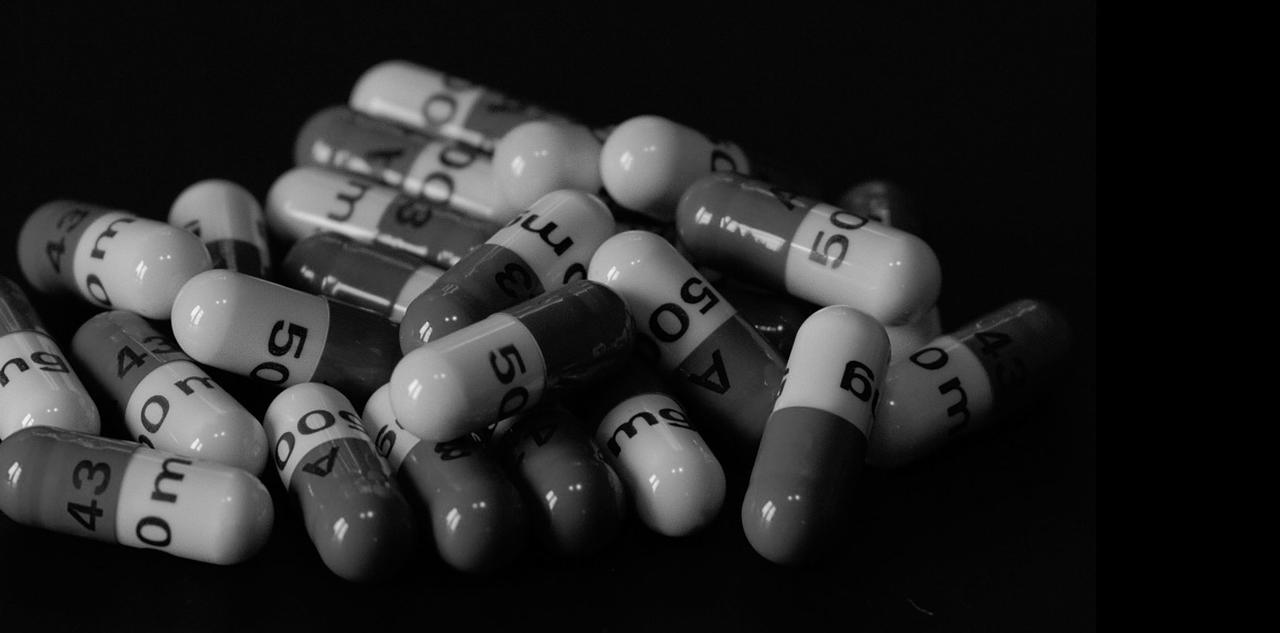
Key antibiotics
The main classes of antibiotics and key drugs are listed below - however there are hundreds of antibiotics and this list is by no means exhaustive.
Penicillins
Examples: penicillin, amoxicillin, flucloxacillin, piperacillin
Penicillin was the first antibiotic to be discovered and used in the 1940s. Now penicillin antibiotics are used to treat a variety of infections, including skin infections. However some people are allergic to penicillin-based drugs.
Flucloxacillin is a penicillin drug which can be used to treat infections caused by bacteria that are resistant to other penicillin-type antibiotics.
Piperacillin is an important penicillin drug which can kill a wide range of bacteria. It is combined with another drug in an injection. This combination, called piperacillin/tazobactam - or ‘tazocin’ colloquially - is used in hospitals to treat severe infections, including those from multiple organisms. In 2016 the government introduced a scheme urging hospitals to reduce use of piperacillin/tazobactam to prevent rising antibiotic resistance.
Cephalosporins
Examples: cephalexin, cefurozime, ceftazidime, ceftaroline fosamil
These have been five ‘generations’ of cephalosporin drugs, with each generation are effective against different types of bacteria. They are used to treat a wide range of infections.
Carbapenems
Examples: meropenem, ertapenem and imipenem
These are antibiotics that are normally reserved for serious infections in hospitals. Carbapenems are effective against bacteria which have become immune to penicillins and cephalosporins. The government’s 2016 scheme urged hospitals to reduce their carbapenem use to stop the rise of carbapenem-resistant bacteria.
Quinolones
Examples: ciprofloxacin, levofloxacin and moxifloxacin
Quinolones can kill a wide range of bugs – and so are useful for treating a wide range of infections.
Aminoglycosides
Examples: gentamicin and tobramycin
These are normally only given by injection in hospital to treat very serious illnesses such as sepsis because they can cause side effects including hearing loss and kidney damage. They may also be given as drops for some ear or eye infections.
Tetracyclines
Examples: tetracycline, doxycycline and lymecycline
These are commonly used to treat acne and rosacea.
Macrolides
Examples: erythromycin and clarithromycin
Macrolides are used to treat lung and chest infections. They can also be used on patients with a penicillin allergy, or to treat penicillin-resistant strains of bacteria.
Polymyxins
Example: colistin
Colistin began being used in the 1950s to treat serious lung, wound and bloodstream infections. But soon after it was introduced it was shelved because it is toxic to the kidneys and the nervous system. It was brought back out of the cupboard when bacteria began to become resistant to carbapenem antibiotics. It is also used routinely by cystic fibrosis patients because it is available in a form which can be inhaled into the lungs, as well as by infusion into the vein. Now it is known as the antibiotic of ‘last resort’ as it is one of few options doctors have left when treating infections from bacteria resistant to carbapenem antibiotics. It is also used in farming and agriculture to treat infections in animals.
Glycopeptides
Examples: Vancomycin, teicoplanin
These work against a family of antibiotic known as gram-positive bacteria, which includes common superbugs Clostridium difficile and methicillin-resistant staphylococcus aureus (MRSA). They are used given before certain surgeries where there is a high risk the patient will catch MRSA. They are also used to treat infections from enterococci bacteria which are resistant to other antibiotics.
Oxzaolidinones
Example: Linezolid
Linezolid began being used in the early 2000s to treat resistant bacteria that causes disease, including methicillin-resistant staphylococcus aureus (MRSA) and drug resistant tuberculosis. It can be given as a tablet or an injection.


